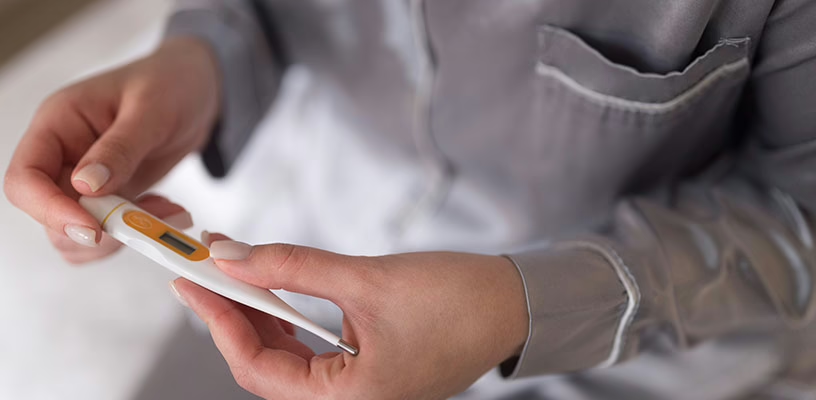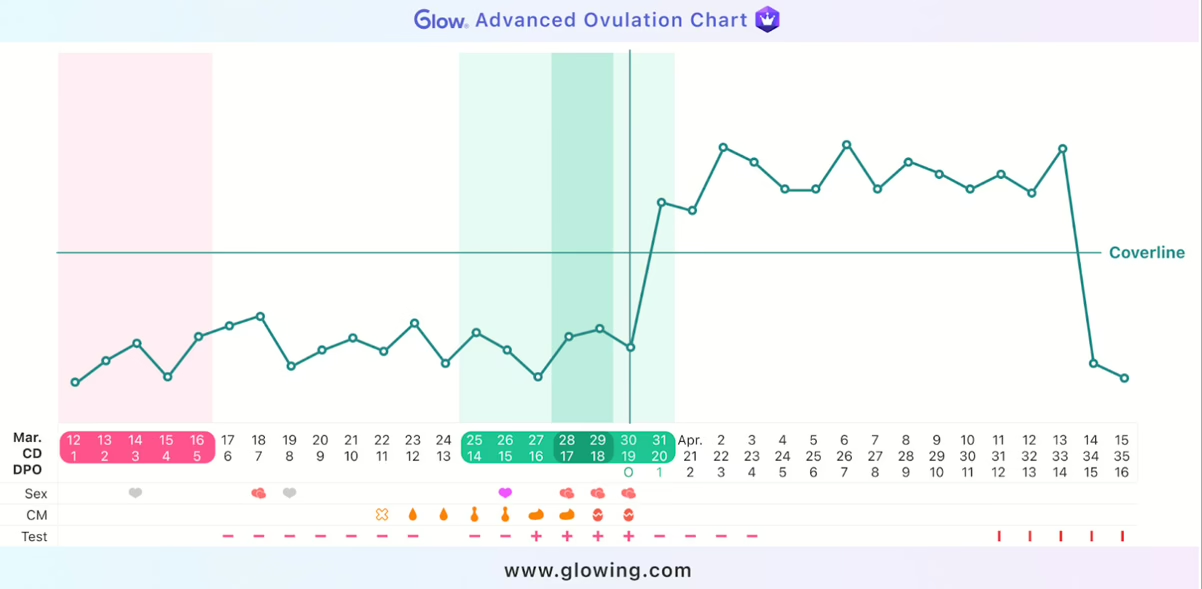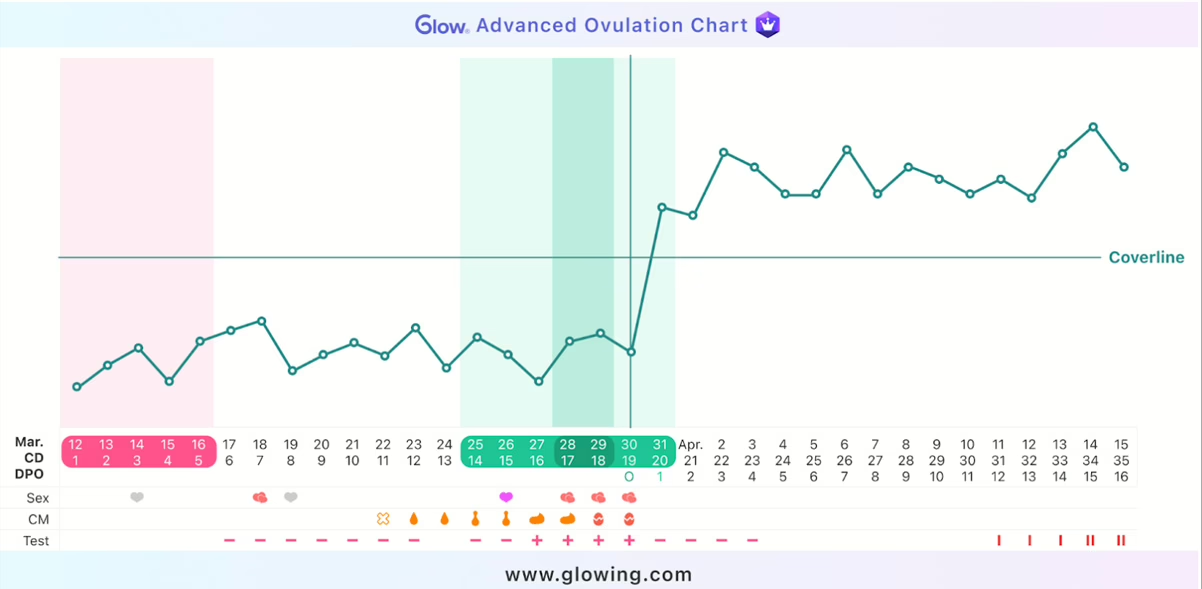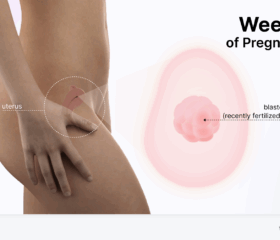Implantation Dip: What It Means (With an Early Pregnancy BBT Chart)
When you’re actively trying to conceive, it’s easy to interpret every slight twinge, craving, or mood swing as a sign you’re expecting. In this search for early clues, many people who track their cycles discover a phenomenon known as the "implantation dip."

If you’ve been tracking your basal body temperature (BBT), you may have heard that a sudden, one-day drop in temperature is an early sign of pregnancy. But does it really mean you have a passenger on board, or is it just wishful thinking?
Read on to learn what the implantation dip is and whether it’s a sign of pregnancy you can count on.
What is basal body temperature (BBT)?
Before we get into the implantation dip, let’s look at what exactly basal body temperature (BBT) is. Your BBT is your body’s lowest resting temperature, measured immediately after you wake up, before you eat, use the bathroom, or even get out of bed. 1
How to use your BBT to detect ovulation
Many women track their BBT to find out when they’re ovulating (when one of their ovaries releases a mature egg).
Before you ovulate, the hormone estrogen keeps your BBT in a lower range. 2 After ovulation occurs, your body starts producing progesterone, which thickens the lining of your uterus so a fertilized egg can implant in it. This may cause your BBT to rise by about 0.5 ºF to 1 ºF, where it stays elevated for the rest of your cycle. 3
The way BBT rises and falls differs somewhat from woman to woman and can even vary from month to month, but many people still believe that by charting your BBT over several menstrual cycles, you’ll be able to identify patterns, which you can use to get a handle on when you’re most fertile—or when you’re pregnant.
How to measure your BBT
Start tracking your BBT on the first day of your period (the day you start bleeding). You’ll need a sensitive basal thermometer that can measure temperatures to at least one-tenth (2 decimal places) of a degree. 1
To get an accurate reading, you should: 1
- Take your BBT as soon as you wake up
- Take your BBT at the same time each day
- Measure from the same place each day (e.g., your mouth)
- Record your temperature each day
Keep doing this every day until you get your next period. As mentioned, you’ll need to do this over various cycles to get reliable results.
What is the implantation dip?
An “implantation dip” is a noticeable, one-day drop in BBT, which many claim aligns with the window when a fertilized egg implants in the uterine lining, usually around 10–14 days after ovulation. 4
Unfortunately for would-be moms who are eager to confirm their pregnancies, the scientific evidence for the existence of this dip is lacking. In a more general sense, while BBT tracking is very popular (both for predicting fertility and confirming pregnancy), doctors caution that it isn’t a reliable method. 5
Does an implantation dip mean you’re pregnant?
Again, unfortunately, an implantation dip isn’t a reliable indicator that you’re pregnant. There’s no conclusive medical research proving that a dip in temperature is likely caused by implantation.
You can be pregnant without your temperature ever taking that one-day plunge, and vice versa. As mentioned, you may even find that your BBT pattern changes from cycle to cycle.
Potential causes of basal body temperature dips
While there hasn’t been much research into what actually causes BBT dips, an estrogen surge could be to blame. During the middle of your luteal phase (the stage just after ovulation), it’s common for the body to experience a brief rise in estrogen. 6
As mentioned, estrogen can lower your body temperature. This quick hormonal fluctuation can temporarily override the warming effects of progesterone, causing your BBT to dip for a single day before progesterone takes over again and pushes it back up. 2
Other factors that interfere with your basal body temperature
Your basal body temperature is highly sensitive and can be influenced by many factors that have nothing to do with your reproductive hormones, such as: 1
- Not getting enough sleep
- Illness or infection
- Stress
- Fever from an infection
- Travelling to different time zones
- Medications
The “implantation dip” is a perfect example of why focusing on the overall trend is more important than obsessing over daily fluctuations.
If you’re pregnant, you may experience implantation bleeding
Some women have light spotting when the egg implants in the uterus, known as implantation bleeding. Implantation bleeding tends to be much lighter than a period and shows up earlier in your cycle.
Using a basal body temperature chart to tell if you’re pregnant
Instead of searching for a one-day dip, a more telling sign on your BBT chart is the overall pattern of your temperature in the days leading up to your expected period. This is where the difference between a pregnant and non-pregnant cycle often becomes clear.
BBT trends when you’re not pregnant

If a pregnancy doesn’t occur, the corpus luteum (the structure that produces progesterone after ovulation) begins to break down. This causes your progesterone levels to fall dramatically a day or two before your period starts, and your BBT decreases.
BBT trends when you’re pregnant

If a fertilized egg successfully implants, your body begins to produce the hormone human chorionic gonadotropin (hCG), which is what pregnancy tests detect. The presence of hCG signals your body to keep producing progesterone, which is vital for sustaining your developing embryo in your early pregnancy.
Why a pregnancy test is the only way to know for sure whether you’re pregnant
No matter what your chart looks like, the most (and only) reliable way to confirm your pregnancy is to take a home pregnancy test. These tests look for hCG in your urine, and they’re between 98% and 99% accurate. 7
Fight the temptation to test too early. It’s best to stick through your two-week wait (the time it usually takes to get a positive pregnancy test) and test on or after the day you expect your period to start. You may get a false negative pregnancy test result (i.e., a faint line on your pregnancy test) if you test too early, as it takes time for hCG to build to detectable levels.
You could also get your doctor to perform a more sensitive blood pregnancy test, which can tell you if you’re pregnant as early as 7–10 days after conception. 7
Final thoughts
While it’s easy to get excited about changes to your BBT, the implantation dip is not a trustworthy sign of pregnancy. Your BBT is very sensitive and can be affected by various factors, and plenty of women don’t experience an implantation dip at all.
There’s no harm in tracking your BBT from month to month, but you’re best off sticking with a reliable home pregnancy test to get clear answers.
Article Sources
- Cleveland Clinic. "Basal Body Temperature" Retrieved August 5, 2025.
- Autonomic Neuroscience. "Sex hormone effects on autonomic mechanisms of thermoregulation in humans" Retrieved August 5, 2025.
- Planned Parenthood. "What’s the temperature method of FAMs?" Retrieved August 5, 2025.
- Cleveland Clinic. "Implantation Bleeding" Retrieved August 5, 2025.
- Obstetrics Gynecology. "Natural family planning. II. Basal body temperature and estimated time of ovulation" Retrieved August 5, 2025.
- Endotext. "The Normal Menstrual Cycle and the Control of Ovulation" Retrieved August 5, 2025.
- Cleveland Clinic. "Pregnancy Tests" Retrieved August 5, 2025.







